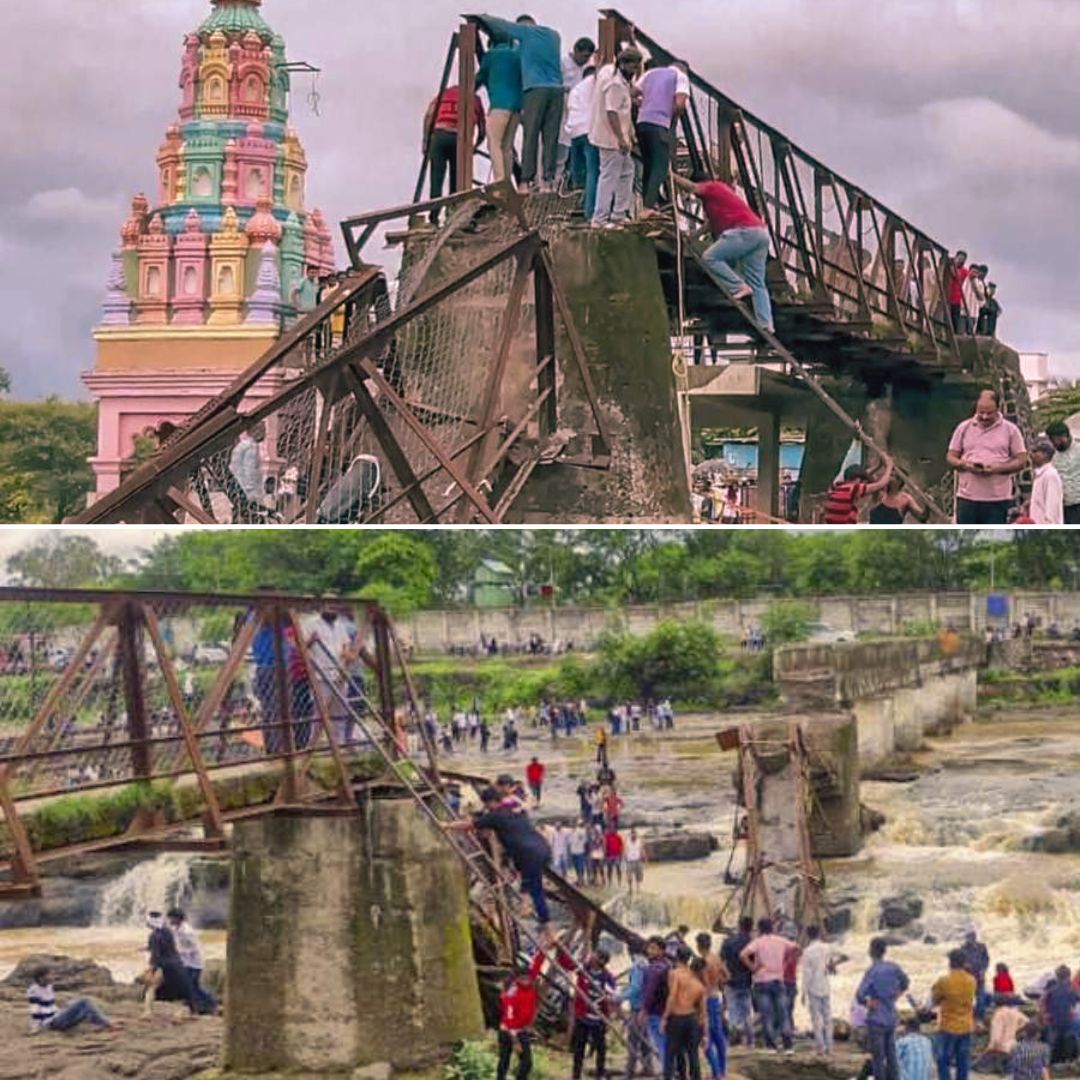At least four people lost their lives and 51 others were injured when a 30-year-old iron pedestrian bridge over the Indrayani River collapsed on Sunday afternoon in Pune’s Maval tehsil, Maharashtra. The incident occurred around 3:15 pm near Talegaon, a popular monsoon tourist spot, where over 150 people had gathered on the bridge, far exceeding its intended capacity.
Rescue operations led by the National Disaster Response Force (NDRF), local police, and fire services successfully rescued all missing persons by evening. Maharashtra’s government has announced compensation for the victims’ families and initiated a high-level inquiry to investigate the causes and accountability for the disaster.
Overcrowding and Collapse Amidst Monsoon Rush
Eyewitness accounts paint a harrowing picture of the moments leading up to the collapse. Swapnil Kollam, a survivor, recalled, “There were more than 150 to 200 people on the bridge, and at the spot where it gave way, more than 50 people were standing. Suddenly, the bridge started shaking and then collapsed. It was sheer panic with people screaming and falling into the river.”
The iron bridge, constructed in 1992 and designed solely for pedestrian use, was reportedly carrying two-wheelers as well, despite clear signage restricting vehicles. Maharashtra’s District Collector Jitendra Dudi confirmed that four people died and 51 were hospitalised with injuries ranging from fractures to minor cuts.
Minister Makarand Patil expressed concern over the disregard for safety warnings, stating, “The bridge was declared unsafe for vehicles and overcrowding, but the rush of tourists eager to enjoy the monsoon led to this tragedy.” Chief Minister Eknath Shinde visited the site and ordered an immediate structural audit of all similar bridges across the state to prevent such incidents.
Background and Accountability Questions
The collapsed bridge had been flagged for replacement months ago, with the state government sanctioning ₹8 crore for a new structure. However, the old bridge remained in use, especially during weekends and holidays when tourist inflow surged.
The recent heavy monsoon rains had swollen the Indrayani River, increasing the risk factor. Despite warning boards and barricades, enforcement was lax, and locals and tourists alike ignored restrictions. Political leaders from various parties have condemned the incident, calling it “avoidable” and demanding a thorough probe.
Congress president Mallikarjun Kharge and Rahul Gandhi urged the government to ensure strict accountability and better infrastructure management. The district administration has formed a committee to investigate administrative lapses, maintenance records, and crowd control failures that may have contributed to the disaster.
The Logical Indian’s Perspective
This tragic event underscores the critical importance of maintaining public infrastructure and enforcing safety regulations, especially in areas prone to natural hazards during the monsoon. While the natural elements—heavy rains and a swollen river—played a role, the human factors of negligence, overcrowding, and inadequate enforcement cannot be overlooked.
The loss of lives and injuries are a painful reminder that infrastructure audits and timely action are not mere formalities but essential safeguards. The Logical Indian calls for a collective commitment from government authorities, local administrations, and citizens to prioritise safety and accountability.
It is only through such a shared responsibility that we can prevent future tragedies. How can communities and authorities collaborate more effectively to ensure public safety without compromising access to natural and recreational spaces?











